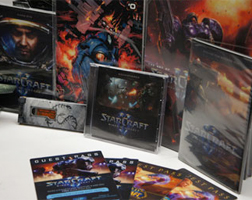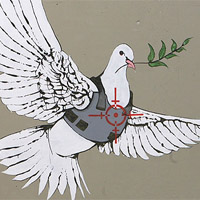Creativity is a resource – you can buy it
You’re about to learn how much of a nerd I really am. I recently bought Starcraft 2: Wings of Liberty. Most people forked out around $60 for this game – I spent $100 for the collectors edition. You might ask, ‘really Scott? An extra $40 for the exact same game? Was it worth it?’ and my response is this: it will be.

Why did I do it? Creativity. As a designer, I am constantly looking for deposits of creative and inspiring material. It’s my fuel. I doubt there’s an artist out there that would dare say that they don’t owe a large portion of their success to other creative influences. It’s quite simple: creativity fuels creativity. So the question is, do we invest in creative influences?
I bought the collectors edition because I knew it would be full of all kinds of eye candy, storyline, and beautiful illustrations. Whose to say that the extra $40 won’t lead to me making thousands more on a particular illustration? Whose to say it won’t make me hone my skills to a level that lands me my next job? The fact is, we can’t see what kind of impact these things will have on our future. At least not immediately. But I’m willing to bet that each of you can look back and pinpoint very significant sources of creativity that seemed insignificant or trivial at the time you were exposed to them.
Finding creative resources
So, what else do I do to expose myself to creativity? I make a point to see good movies in the theater and subscribe to netflix. I go to concerts and visit art exhibits. I read comic books and design publications. I pay extra for good packaging, and several other things that carry good graphic design.
I know what you’re thinking. You get this through your rss feeds and the websites you visit. You’re right, those are excellent sources of creative fuel. But don’t be afraid to step outside of the box. Go to a concert. Buy a few apps simply because they look pretty. Go buy a cd – not from iTunes – buy the hardcopy and enjoy the cover art, the layout, and the inserts that are designed with it. Buy an action figure to sit on your desk. There are plenty of examples out there, and what works for me might not work for you. So explore them. Don’t be afraid to shovel out some cash for them. Don’t be afraid to rearrange your schedule for them.
The point of this post isn’t to say that I’m doing it right and that you’re doing it wrong. It’s to encourage all of us to look for sources of creative inspiration in our lives. And once we find them, to make them a priority. They are not expenses – they are investments. I would have very little imagination if it wasn’t for the thousands of legos I had as a kid. Most people would call those toys. I call them tools.
Hi There!
I'm Scott, and I love writing things like this. But I spend most of my time working as a designer.
See my work»



